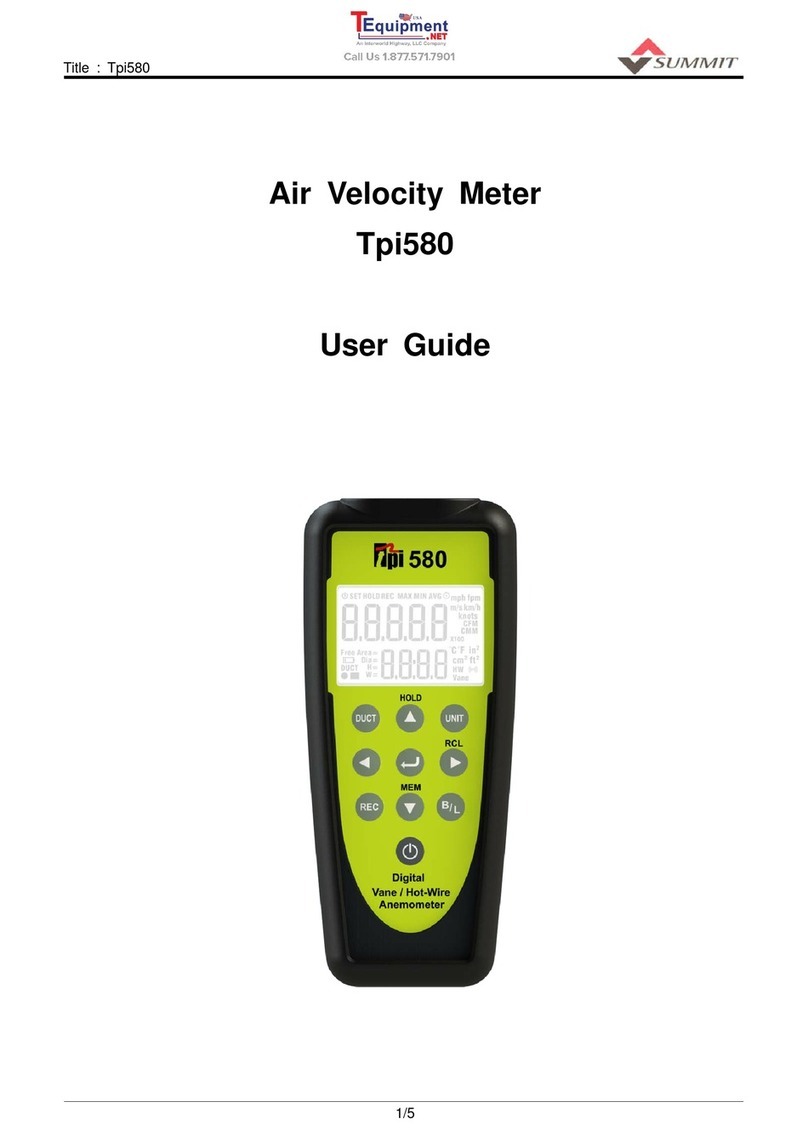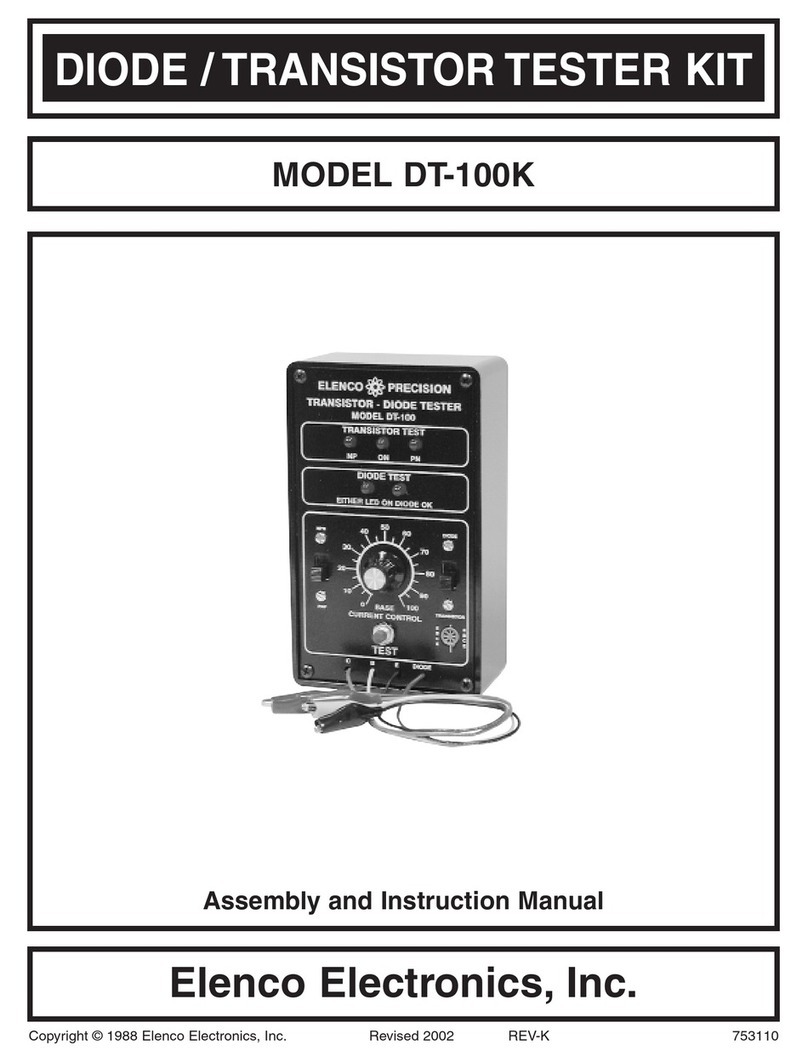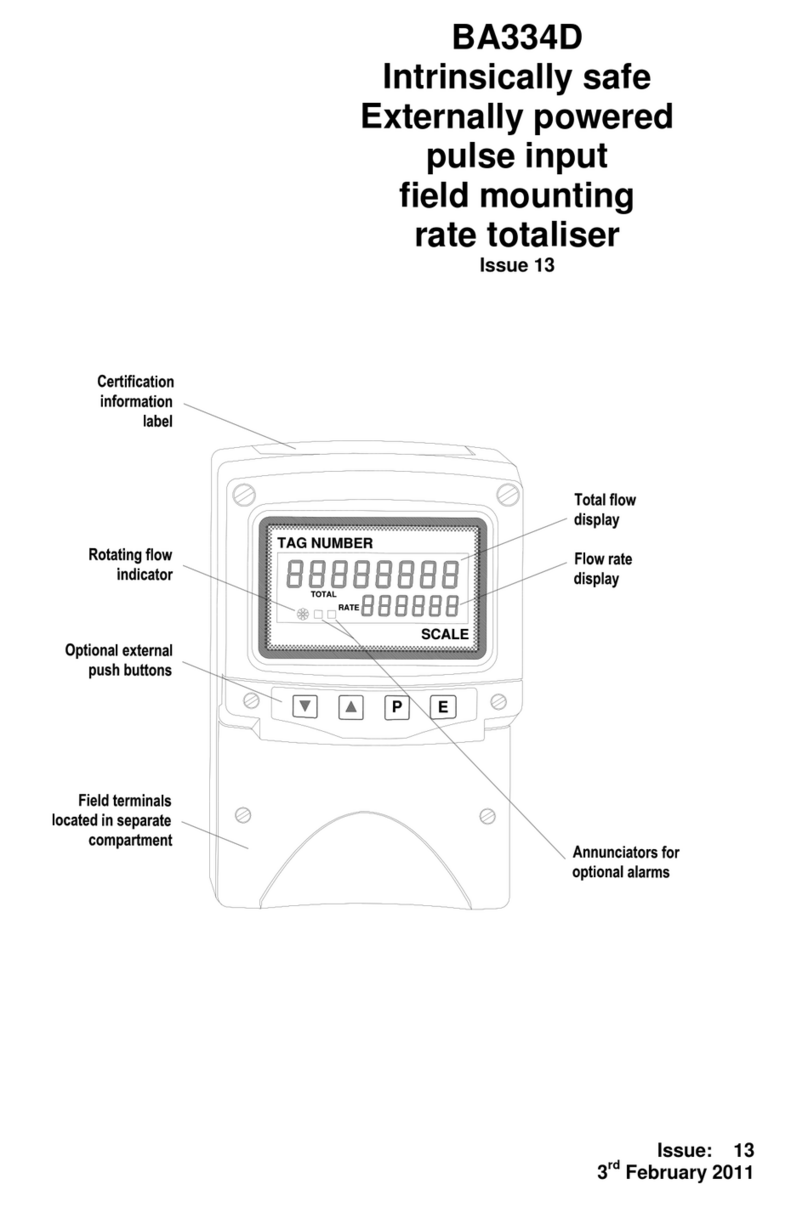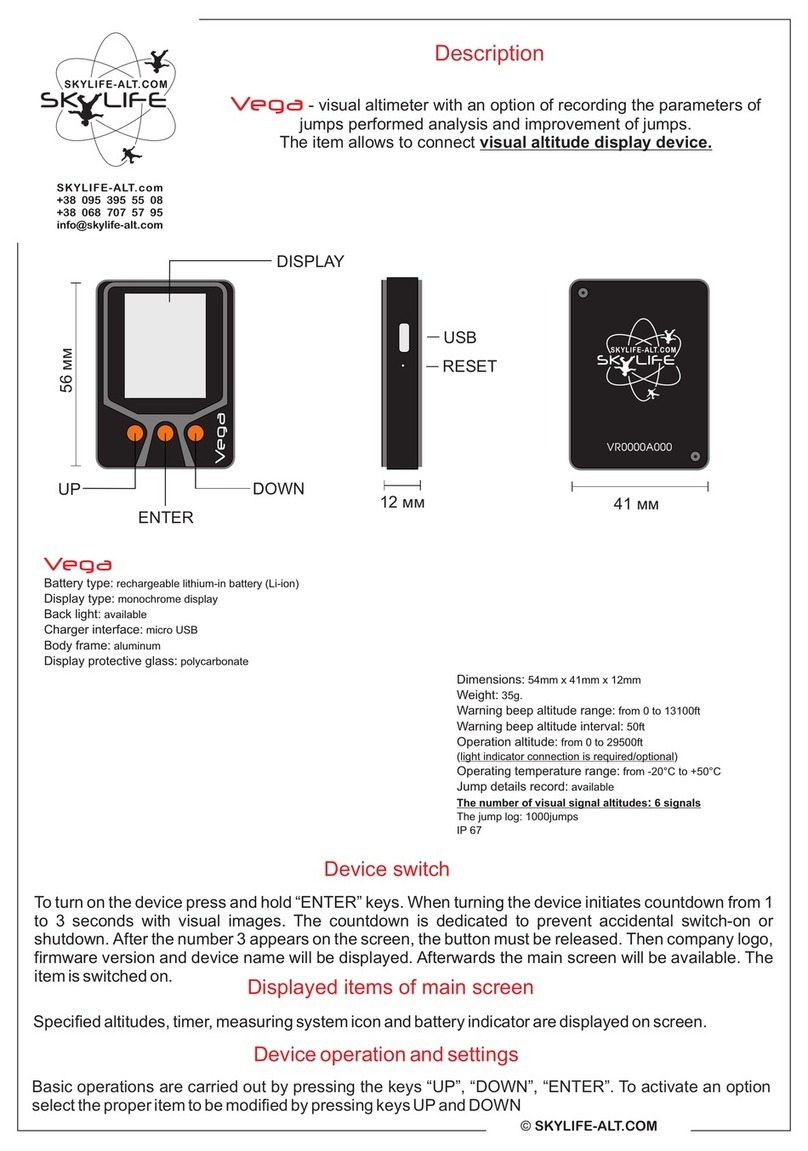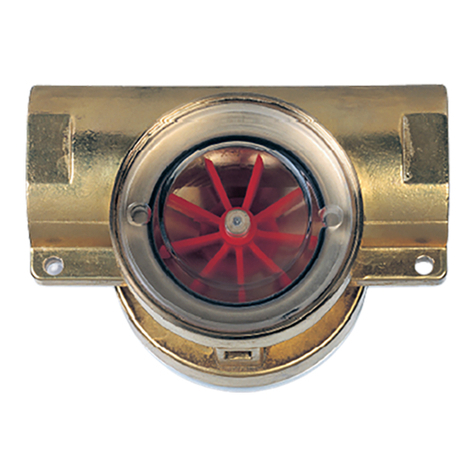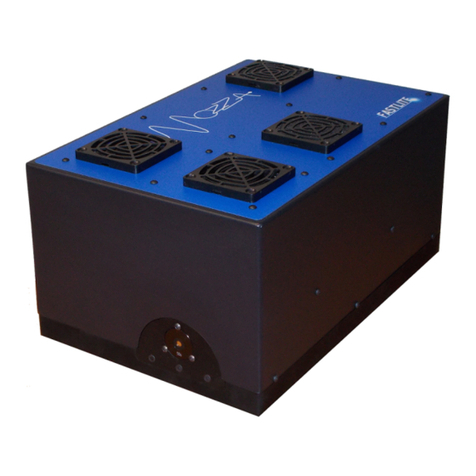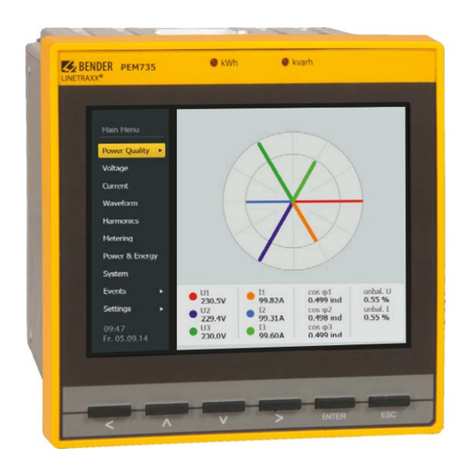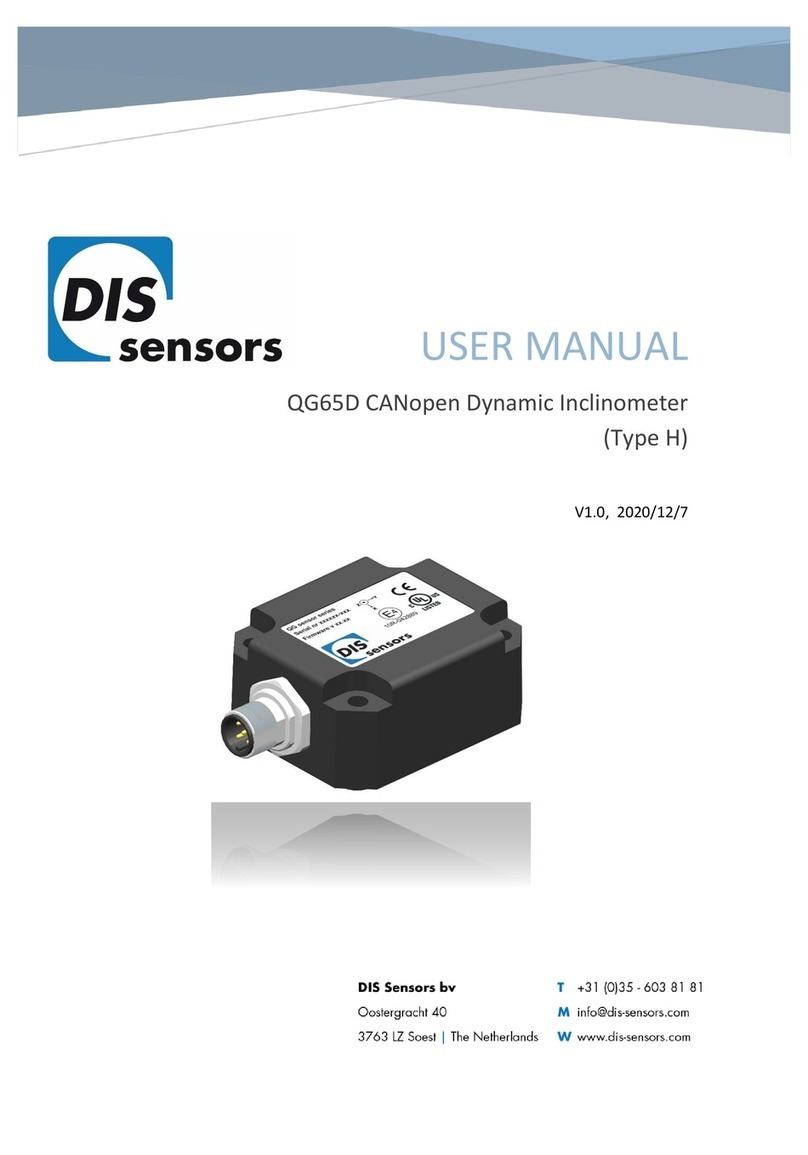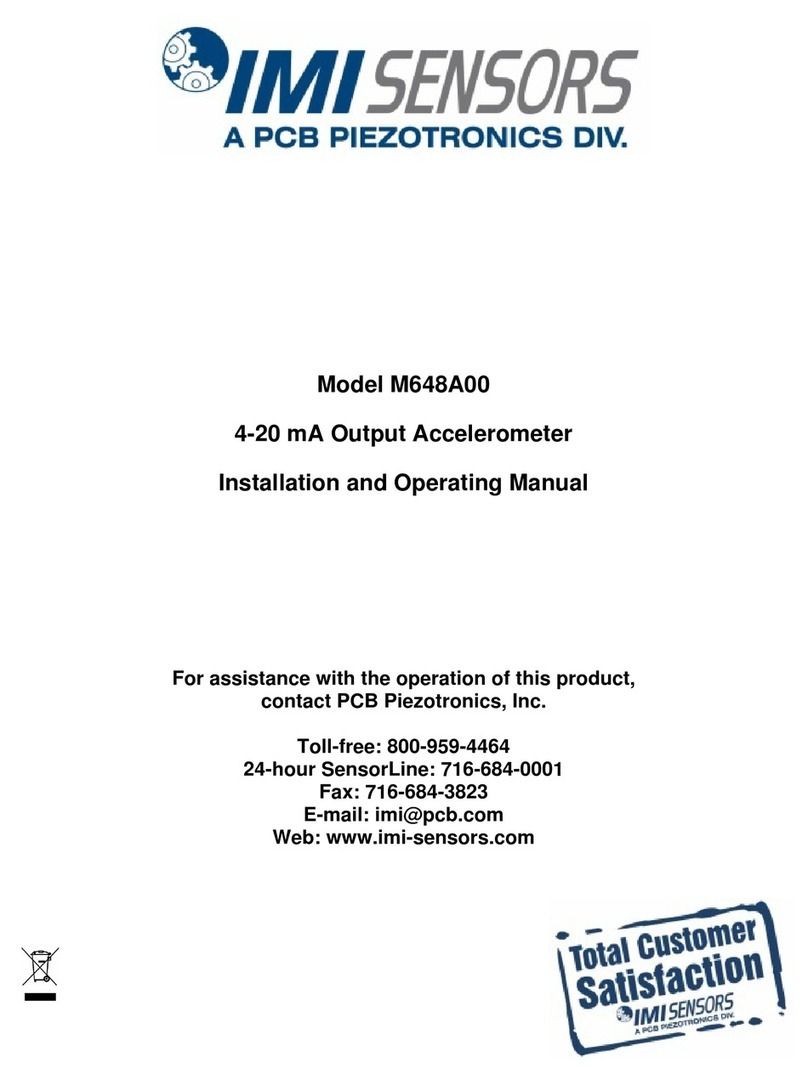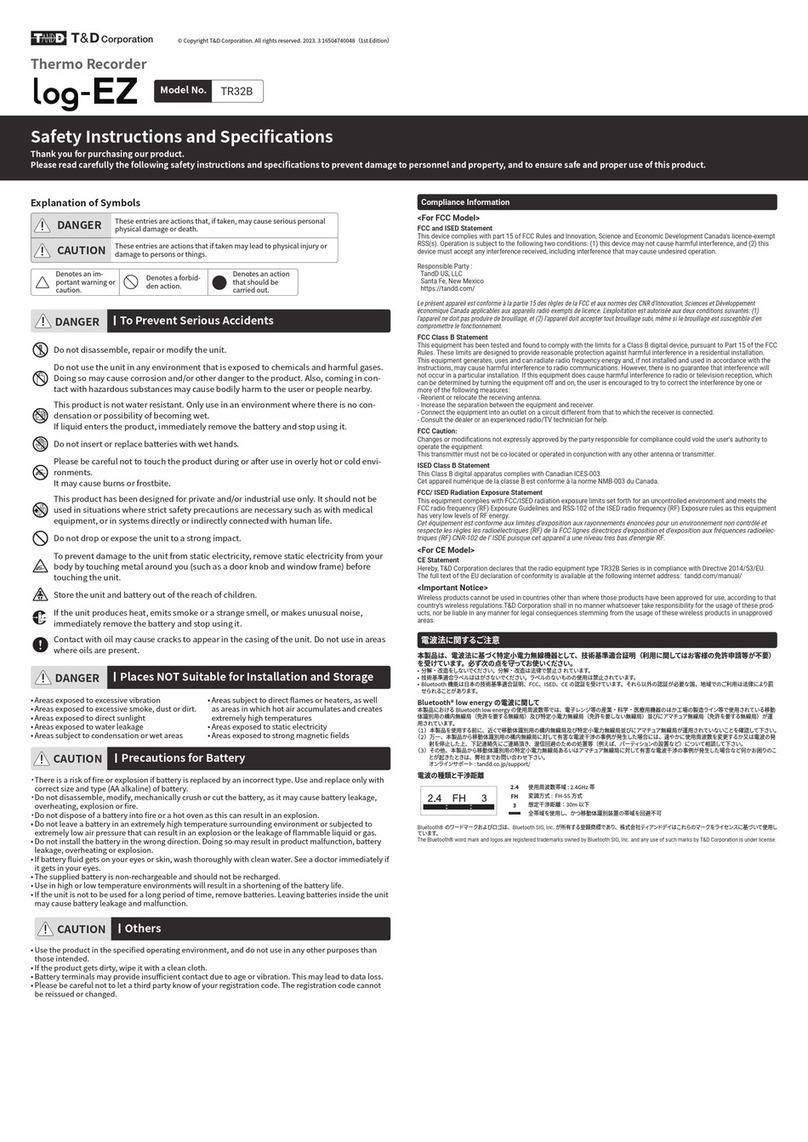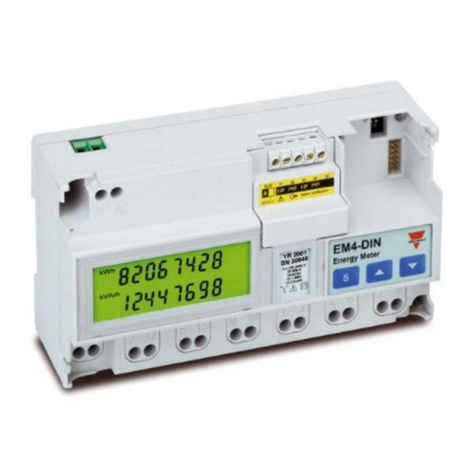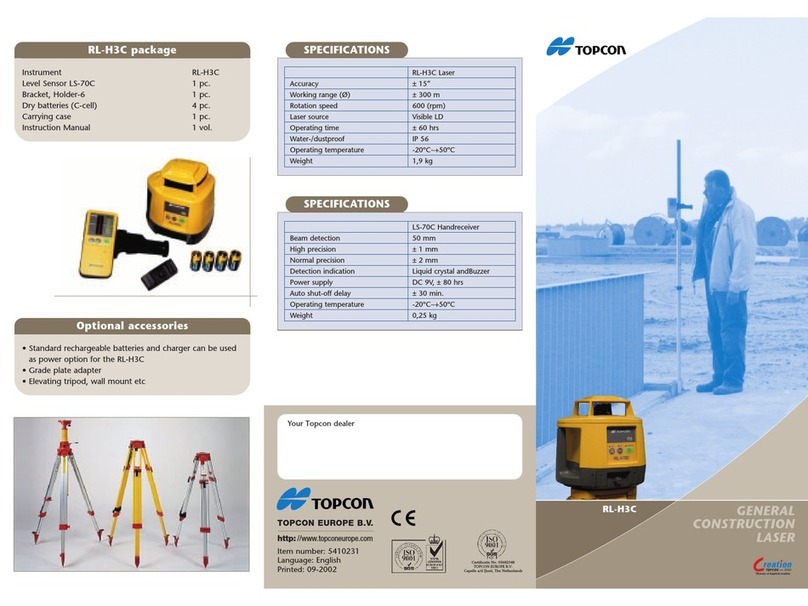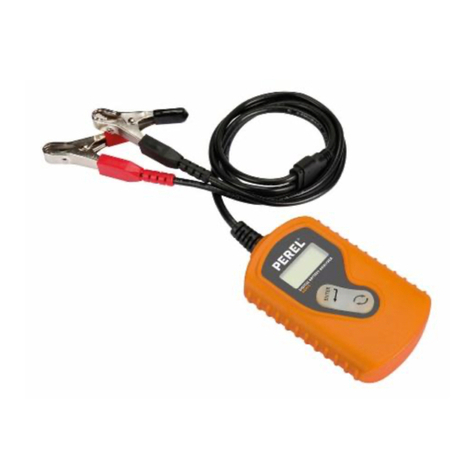Viso Systems LabSpion User manual

1
VISO SYSTEMS LabSpion
User Manual
Revision: 23 December 2019

Congratulations on purchasing your new Viso Systems LabSpion. Before using this
product, please read the Safety Information.
This manual contains descriptions and troubleshooting necessary to install and
operate your new Viso Systems product. Please review this manual thoroughly to
ensure proper installation and operation.
For news, Q&A and support at Viso Systems, visit our website at
www.visosystems.com
Other manuals in this series for which the latest version can be downloaded from
www.visosystem.com, include:
▪LabSpion Assembly manual
▪Light Inspector User Guide (Software)
▪LabFlicker User Manual
▪VISO Reference CALI-T50 User guide (calibration light source)

Contents
Safety Information........................................................................................................4
Disposing of this Product ..............................................................................................4
Introduction..................................................................................................................4
Product Dimensions......................................................................................................5
Packages and Weight....................................................................................................5
Room Considerations....................................................................................................8
Minimum Room Dimensions ......................................................................................11
Installation ..................................................................................................................14
Making Measurements...............................................................................................28
Specifications..............................................................................................................29

Safety Information
Warning! This product is not for household use.
Read this manual before installing and operating the LabSpion, follow the safety
warnings listed below, and study all the cautions in the manual.
Preventing electric shocks
Make sure the power supply is always grounded.
Use a source of AC power that complies with the local building and electrical codes,
that has both overload and ground-fault protection.
If the controller or the power supply are in any way damaged, defective, wet, or
show signs of overheating, disconnect the power supply from the AC power and
contact Viso Service for assistance.
Do not install or use the device outdoors. Do not spray with or immerse in water or
any other liquid.
Do not remove any covers or attempt to repair the controller or the power supply.
Refer any service to Viso.
Disposing of this Product
Viso Systems products are supplied in compliance with Directive 2012/19/EU on
waste - electrical and electronic equipment (WEEE) together with the RoHS Directive
2011/65/EU with amendments 2015/863. Help preserve the environment! Ensure
that this product is recycled at the end of its lifetime. Your supplier can give details of
local arrangements for the disposal of Viso Systems products.
Introduction
About this document
These guidelines describe the installation process of the LabSpion followed by the
typical measurements of various light sources..
About the LabSpion
The LabSpion is a revolutionary new far field goniometer system with a spectrometer
sensor that makes it possible to measure all photometric measurements quickly and
efficiently. The Light Inspector software enables it to quickly measure, save and
export the newly obtained data.
© 2007 Viso Systems ApS, Denmark
All rights reserved. No part of this manual may be reproduced, in any form or by any means,
without permission in writing from Viso Systems ApS, Denmark. Information subject to change
without notice. Viso Systems ApS and all affiliated companies disclaim liability for any injury,
damage, direct or indirect loss, consequential or economic loss or any other loss occasioned by
the use of, inability to use or reliance on the information contained in this manual.

Product Dimensions
The minimum distance between the LabSpion goniometer and the back wall is 1
meter. The minimum distance between the sensor and the end wall is 0.5 meters.
All dimensions in millimetres
Packages and Weight
▪LabSpion item list
▪Base
▪Tower
▪Stand
▪C-plane head
▪Lamp Bracket
▪E27 Lamp holder
▪Tripod
▪Sensor
▪Cali T50
▪Bosch Cross Line Laser
Documents
▪Assembly Manual
▪Sensor Calibration Certificate
▪Cali T50 certificate
1646
511 118 1017
1248
111
450
182
1534
124
906
1332
450
823
281
598
A A
B B
C C
D D
E E
F F
8
8
7
7
6
6
5
5
4
4
3
3
2
2
1
1
DRAWN
CHK'D
APPV'D
MFG
Q.A
UNLESS OTHERWISE SPECIFIED:
DIMENSIONS ARE IN MILLIMETERS
SURFACE FINISH:
TOLERANCES:
LINEAR:
ANGULAR:
FINISH: DEBURR AND
BREAK SHARP
EDGES
NAME
SIGNATURE
DATE
MATERIAL:
DO NOT SCALE DRAWING
REVISION
TITLE:
DWG NO.
SCALE:1:50 SHEET 1 OF 1
A3
WEIGHT:
LabSpion Assem Front dimensions

Assembly Box
▪2 m IEC power cord
▪5 m USB cable
▪3 m RJ45 for connection between LabSpion Base and C-Plane Gonio Head
▪25 m RJ45 cat 5 for connection between LabSpion Base and LabSensor
Base: 27 kg
Tower + C-Plane Head: 25 kg
Stand: 24 kg
Tripod
E27 Holder
Lamp
Bracket
Sensor + Cali T50: 6 kg

▪Light Inspector USB stick (Windows)
▪Bulb adaptor: E27, E14, G10, B22.
▪Laser Distance Plate
▪1 x Steel Pin 200 mm
▪2 x Steel Pin 45-degree handle
▪6 x Plastic end caps for pins
▪2 x Small Lamp Brackets + M10 Handles + 20 mm Plastic Spacer
▪2 x M8 Handle + Thumb Screw for Base attachment
▪8 x M6x35 mm Screws for Lamp Bracket mounting
▪8 x 20 mm plastic spacers for Lamp Bracket mounting
▪2 x M6 Thumb Screws for Laser Distance Plate
Shipping Packages
Shipping Dimensions
Shipping Volume
Weight
1. Sensor + Cali
560 x 565 x 350 mm
0.111 m3
6 kg
2. Base
510 x 510 x 220 mm
0.057 m3
27 kg
3. Bracket + Tripod +
Assembly Parts
1,655 x 295 x 320 mm
0.156 m3
8 kg
4. Tower + C-plane Gonio
455 x 350 x 1,180 mm
0.188 m3
25 kg
5. Stand
610 x 605 x 820 mm
0.814 m3
24 kg
Total shipping weight: 90 kg.
Total shipping CBM: 1,814 m3
The shipment is done in a total of 5 packages.
Dimensions on a single pallet: L:168 W:90 H:120

Room Considerations
Laboratory environment
▪Always keep your laboratory clean from dust and particles. Dust may
interfere with measurement if it accumulates on and around the sensor by
introducing straylight and disturbing translucence. Dust and particles in the
mechanical parts of the goniometer may disturb functionality and may
cause wear on motors, belts and bearings. Disconnect all USB cables and
power supplies, and vacuum clean your goniometer regularly (normally
every month) to remove dust. Mount a brush on the vacuum cleaner
handle. Dry off all external surfaces with a clean, dry, cotton cloth (avoid
statics).
▪Avoiding air currents is necessary to minimize cooling of devices under
test. Limit air flow (e.g. from air conditioning systems or draught) around
the system (may alter light source intensity).
▪Limit heat transmission from light source through mounting system. Should
be mounted as realistically as possible
The standard test conditions and
tolerance intervals of CIE DIS 025
(laboratory conditions)
Standard test
condition
Tolerance interval
Ambient temperature
25.0 °C
±1.2 °C
Surface temperature for device
under test
Nominal operating
temperature tp
±2.5 °C
Air movement
Stationary air
0 m/s to 0.25 m/s
Sensor Distance
The measurement method used in the LabSpion system is called “far field”, which
Sensor distance =
Minimum 8 x light source diameter/length

means that the distance between the measuring light source and the sensor should
be at least 8 times the diameter/length of the light source as shown below.
Please note that “light source diameter/length” is only the illuminated part of the
luminaire!
Light source
diameter/length
Minimum sensor distance
250 mm
2 m
500 mm
4 m
1,000 mm
8 m
1,500 mm
12 m
Physical Diameter
Light Source Diameter/Length

Goniometer Dark zone
Normally when doing light measurement, a completely dark room is needed. But
with the LabSpion it is not a necessity for the whole room to be dark, as the sensor
uses a special directional sensor. This means having only the goniometer zone dark
will be sufficient as shown below.
The Dark Zone is recommended to be 2 meters or more.
A room can be darkened either by painting the walls black or using a black curtain.
A black Molton curtain can work better than a painted wall, as the folds in the
curtain can function as small light bafflers trapping the light.
Note: If you have the
option to have a fully dark
room, this should this
should be your first
choice.
Dark zone depth
Minimum 2 m is
recommended

Minimum Room Dimensions
As the distance to the sensor must be at least 8 x luminaire diameter plus the
physical properties of the goniometer (1 m) and the sensor (0.5 m), we can calculate
the minimum dimensions of the room to be as shown below.
Luminaire diameter
W = Room width
H = Room height
L = Room length
0.25 m
1.7
2.2
3.5 m
0.50 m
1.7
2.2
5.5 m
1 m
1.7
2.3
9.5 m
1.5 m
2.0
2.4
13.5 m
Ambient Conditions
▪Room temperature –maintain at 25°C +/-1°C (within 1 m)
▪Limit heat transmission from light source through mounting system which
should be mounted as realistically as possible
▪Limit air flow (e.g. from air conditioning systems or draught) around the
system
W
H
L

Measuring through a Door Opening
In cases where the length of the room is not sufficient for larger luminaires, the
sensor can be placed outside a door opening to extend the sensor-to-light source
distance as shown below. Placing the sensor outside of the room using a door
opening does not adversely affect the measurement. In fact, the doorway opening
can help reduce stray light.
It should be noted that if the outside room is not dark, the “calibrate to ambient”
functionality must be used to deduct the ambient light from the measurement.
Narrow Room Considerations
Even a dark wall or floor can reflect light also known as stray light. This results in
measurement values which are too high. When the sensor is close to the walls or
floor the stray light can enter the sensor and give higher measurement result.
Light reflected into sensor from the walls and the floor
A stray light check can easily be done by standing at the sensor position and blocking
the light from the sensor with your finger and checking if any other light is visible.

Light Baffle
One of the simplest solutions to eliminate stray light is to place a port hole (light
baffle) as illustrated below.
Creating a Light Baffle
Creating a light baffle can be done by using a black curtain and making a circular hole
in the middle, as shown below. Place the light baffle between the goniometer and
sensor at a distance where the lamp is visible from the sensor.
The LabSpion can measure luminaires with a maximum length/diameter of 150 cm,
so the size of the light beam halfway from the sensor to the lamp will be 75 cm.
Consequently, a light baffle placed halfway needs to have a diameter of 75+25 cm to
compensate for small errors in installation.
The procedure of cutting out a light baffle along with the final result is shown above.
Sensor
1.0 m
1.5 m

Installation
Software Installation
Before you can start using the LabSpion, the free “VISO LIGHT INSPECTOR” software
must be installed on your PC. It is supported on all newer windows platforms. Use
the following link to download the latest version:
http://www.visosystems.com/download-light-inspector/
▪Please make sure the LabFlicker is not connected to the computer during
software installation
▪Make sure to install version 5.28 or later for LabFLicker or the LabFlicker
will not be supported by the Light Inspector
▪Run the .msi file and follow the installation instructions
▪USB drivers are automatically installed.
Your measurements are not lost when updating to a newer version or uninstalling
and reinstalling. All measurements will always remain in your document folder. If
you want to remove all your measurements go to the ‘Light Inspector’ folder and
delete them manually.
Typical folder location:
C:\Users\’Username’\Documents\Viso Systems\Light Inspector
Or if stored in dropbox:
C:\Users\’username’\Dropbox
Connecting Power
The LabSpion comes with a standard IEC power-in connector and with a standard
Euro Power Cable, but any power cable can be used as the LabSpion supports any
outlet voltage from 90-260VAC.
The power-in connector supplies power to the goniometer motor, the power
analyzer and the light source being measured. This means the power feed to the
system is also what is being delivered to the light source to be measured.
AC Power Supply Cable Plug
Warning: Risk of an electric shock! Plug installation shall be performed by a qualified
electrician.

A grounding-type (earthed) power plug that
fits the local power outlet must be used.
You can acquire an IEC power cable with a
suitable grounding-type plug from most of
consumer electronics stores.
When installing the plug connect pins as
follows:
▪Blue wire to neutral
▪Yellow and green wire to
grounding (earth)
▪Brown wire to live
Connecting USB
The LabSpion is connected to the computer using a USB connector type A to B.
A 5 m USB cable is included with the LabSpion, however any USB cable supporting
USB2.0 can be used.
The USB will provide communication and power to the LabSpion’s main board
processor. But to run the power analyzer and the photo spectrometer, power must
be connected.
Start the “Viso Light Inspector” software after having connected the USB and the
connection to the LabSpion will be established automatically. A successful
connection is shown with a green “Connected” icon in the upper right corner of the
‘Viso Light Inspector’ software.
You can connect and disconnect the USB without restarting the “Viso Light
Inspector” software, as the connection is always established automatically as soon as
the USB connector is plugged in and vice versa.
Neutral
Ground/Earth
Live

Connecting the LabSensor
The LabSpion is connected to the LabSensor with a RJ45 cable, which is supporting
the transfer of data and power between the two parts.
Warning
Do not connect the LabSensor to the C-plane motor connector, this could damage the
LabSensor.
Connecting the C-plane Goniometer
The C-plane goniometer is connected to the LabSpion base through a RJ45 cable. The
LabSpion will automatically detect the C-plane goniometer.
Warning
Do not connect the C-plane motor to the LabSensor connector, this could damage the
LabSpion.
Connecting Lamp Power
The LabSpion has a built-in power analyzer and power switch. The power switch is
used when running in ambient light correction mode. The lamp will be switched off
before a measurement, so that the values of the ambient light can be obtained and
subsequently subtracted from final measurements.
The maximum current supported by the lamp output is 3A, which is 660W at 220VAC
and 330W at 110VAC.

AC Power Supply Cable Plug
Warning: Risk of electric shock! Plug installation shall be performed by a qualified
electrician.
A grounding-type (earthed) power plug that fits the local power outlet must be used.
You can acquire an IEC power cable with a suitable grounding-type plug from most of
consumer electronics stores.
When installing the plug connect pins as follows:
▪Yellow and green wire to grounding (earth)
▪Blue wire to neutral
▪Brown wire to live

Connecting Diagram
Below there is the connection diagram showing the different connections in order to
make the system operational.
Lamp Power
Mains In

Leveling of the Base
After unfolding and securing the base, the base must be levelled. Initially, place a
bubble level over two legs (orthogonal to the third leg). Adjust one leg via the
adjustable shoes on the base until level.
Turn the bubble level 90 degrees to be parallel to the third leg and adjust to level
again.
Alignment of the Sensor
Before making any measurements, it is important to place the sensor at an
appropriate distance and to align it accordingly to the goniometer.
Height alignment
The sensor must be adjusted to align the lens in the sensor to the center of the C-
Plane Goniometer. To do this, place the sensor on a tripod or table beside and align
the horizontal laser beam to the center of the C-Plane Gonio, see below
1. Make sure the horizontal laser beam is aligned with the center of rotation of the
C-Plane.

2. Adjust the height of the tripod so the laser beam hits in the center of the lens on
the sensor.
Set distance of the sensor
To set the correct distance, align the lamp bracket so the front is in center of rotation
of the Base. This can be done with the laser as shown below or simply move the
Tower back and forth until you can see it is in center of rotation.
Other manuals for LabSpion
3
Table of contents
Other Viso Systems Measuring Instrument manuals

Viso Systems
Viso Systems LabFlicker User manual
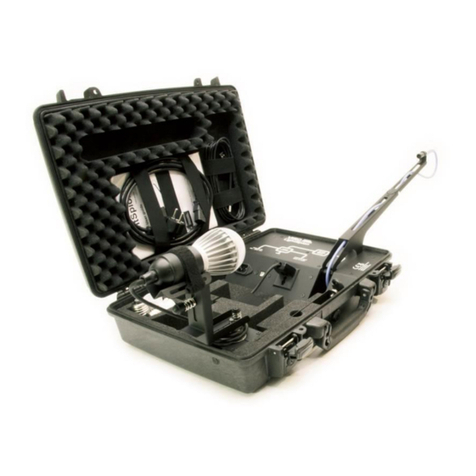
Viso Systems
Viso Systems LightSpion LIGSP001 User manual
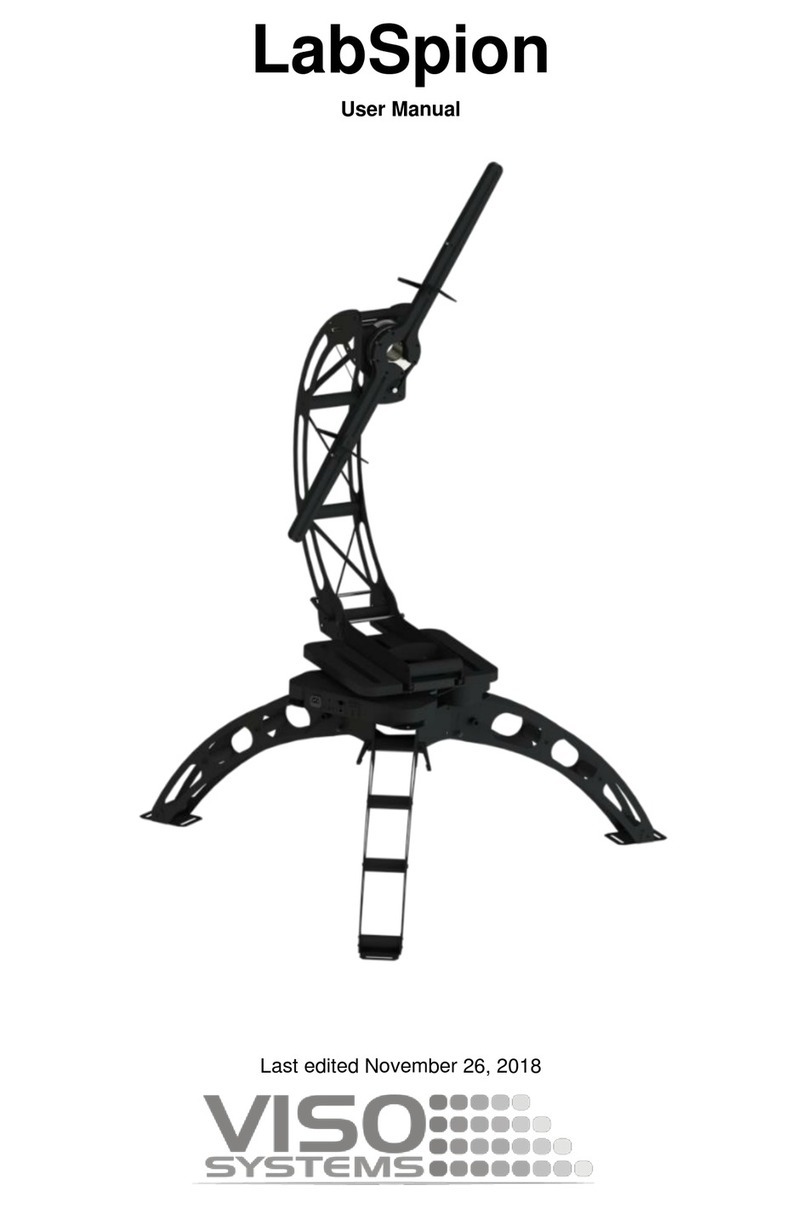
Viso Systems
Viso Systems LabSpion User manual

Viso Systems
Viso Systems LabSpion User manual
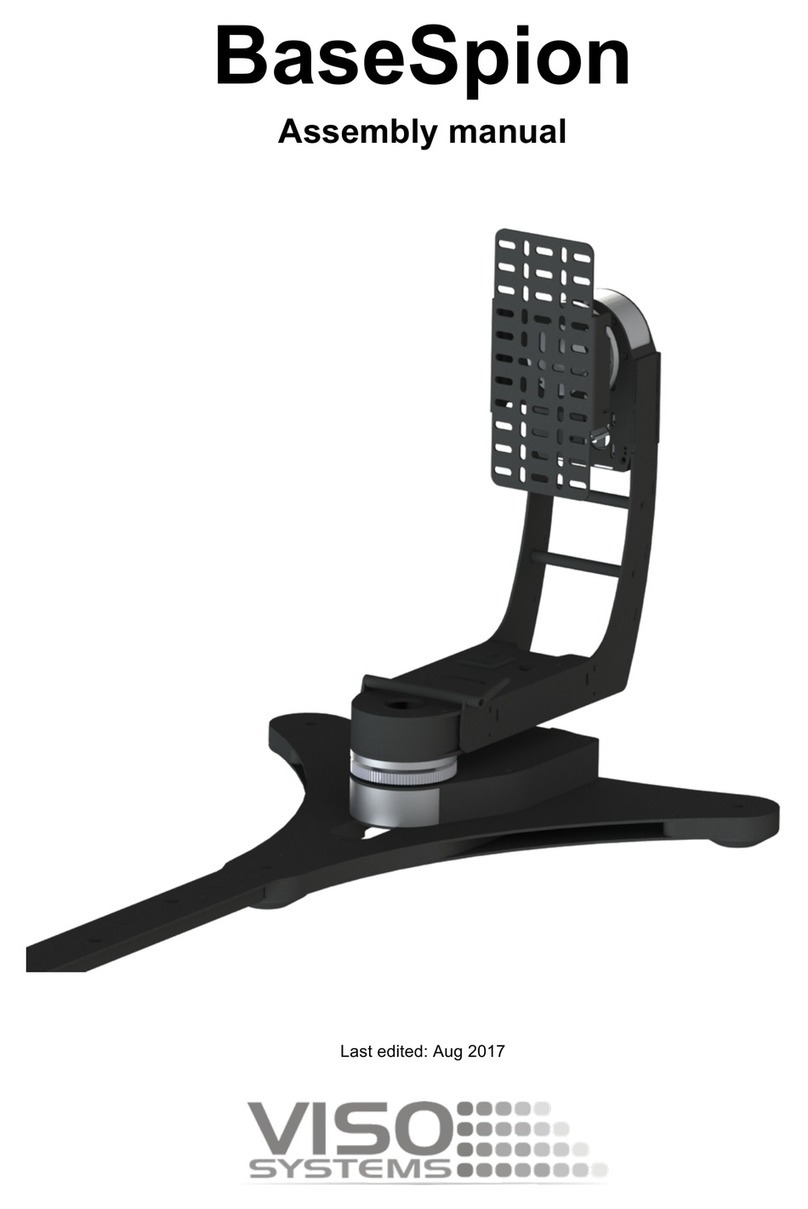
Viso Systems
Viso Systems BaseSpion User manual
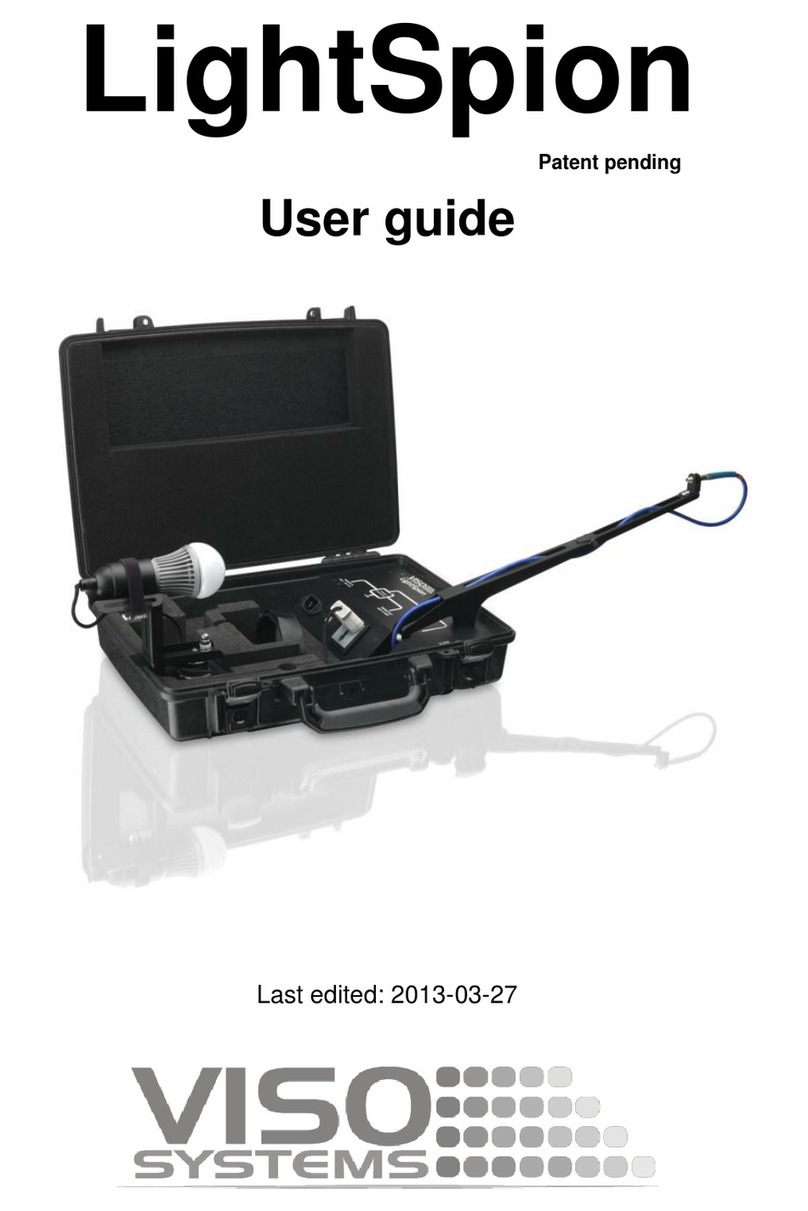
Viso Systems
Viso Systems LightSpion User manual

Viso Systems
Viso Systems VISO SYSTEMS Labarazzi User manual
